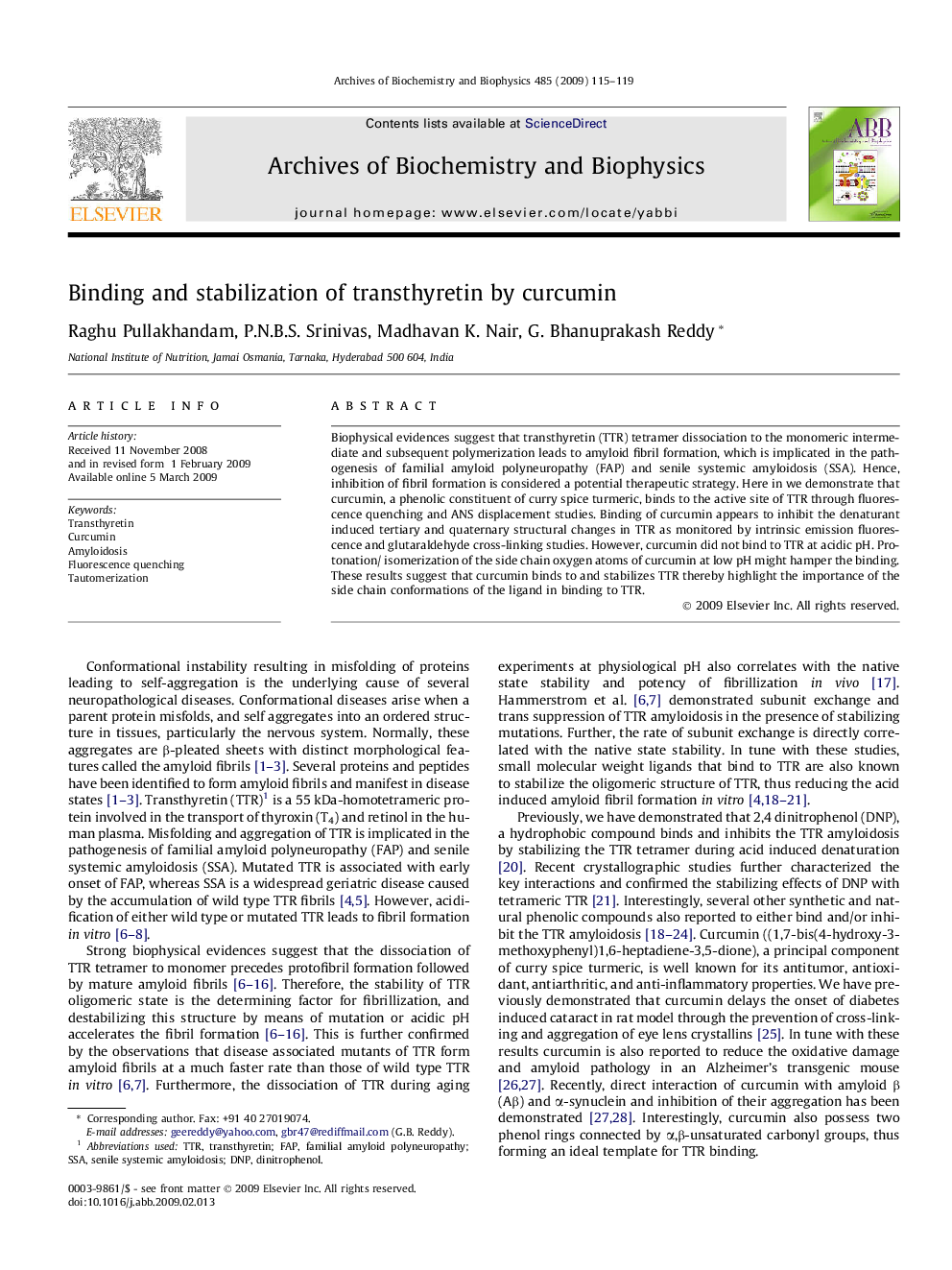| Article ID | Journal | Published Year | Pages | File Type |
|---|---|---|---|---|
| 1926489 | Archives of Biochemistry and Biophysics | 2009 | 5 Pages |
Biophysical evidences suggest that transthyretin (TTR) tetramer dissociation to the monomeric intermediate and subsequent polymerization leads to amyloid fibril formation, which is implicated in the pathogenesis of familial amyloid polyneuropathy (FAP) and senile systemic amyloidosis (SSA). Hence, inhibition of fibril formation is considered a potential therapeutic strategy. Here in we demonstrate that curcumin, a phenolic constituent of curry spice turmeric, binds to the active site of TTR through fluorescence quenching and ANS displacement studies. Binding of curcumin appears to inhibit the denaturant induced tertiary and quaternary structural changes in TTR as monitored by intrinsic emission fluorescence and glutaraldehyde cross-linking studies. However, curcumin did not bind to TTR at acidic pH. Protonation/ isomerization of the side chain oxygen atoms of curcumin at low pH might hamper the binding. These results suggest that curcumin binds to and stabilizes TTR thereby highlight the importance of the side chain conformations of the ligand in binding to TTR.
